|
Supermarine Type 300 Spitfire Prototype
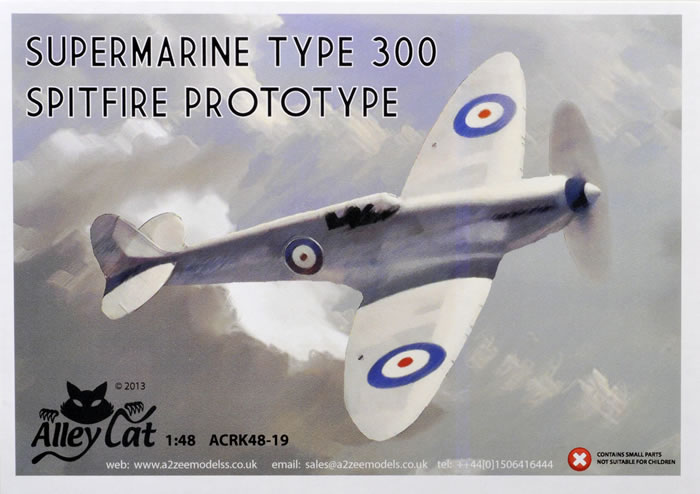
Alley Cat, 1/48 scale
S
u m m a r y |
| Catalogue Number: |
Alley Cat Item No. ACRK48-19 - Supermarine Type 300 Spitfire Prototype |
| Scale: |
1/32 |
| Contents and Media: |
32 parts in grey resin; one small photo-etched fret with three parts; 1 length of brass rod; self-adhesive masks; decals for four variations. |
| Price: |
GBP £40.00 plus shipping available online from A2Zee Models' website.
|
| Review Type: |
FirstLook |
| Advantages: |
Excellent casting; simple parts breakdown; fine crisp recessed panel detail; plenty of useful options to depict the prototype at different times; good level of detail; a genuine one-stop shop. |
| Disadvantages: |
Slight casting imperfection on rear canopy piece. |
| Conclusion: |
This is a simple yet comprehensive full kit of the famous prototype Spitfire K5054 with plenty of optional parts to allow it to be built in several distinct configurations and four different finishes. |
Reviewed by Brett Green

Revell's 1/32 scale Bf 109 G-6 is available online from Squadron.com
R. J. Mitchell's 1931 design to meet Air Ministry specification F7/30 for a new and modern fighter capable of 250 mph, the Supermarine Type 224, was an open-cockpit monoplane with bulky gull-wings and a large fixed, spatted undercarriage powered by the 600 horsepower evaporative-cooled Rolls-Royce Goshawk engine. This made its first flight in February 1934.
The Type 224 was a major disappointment to Mitchell and his design team, who immediately embarked on a series of "cleaned-up" designs, using their experience with the Schneider Trophy seaplanes as a starting point. Of the seven designs tendered to F7/30, the Gloster Gladiator biplane was accepted for service.
Mitchell had already begun working on a new aircraft, designated Type 300, with a retractable undercarriage and the wingspan reduced by 6 ft. This was submitted to the Air Ministry in July 1934, but was not accepted. The design then evolved through a number of changes, including the incorporation of a faired, enclosed cockpit, oxygen-breathing apparatus, smaller and thinner wings, and the newly developed, more powerful Rolls-Royce PV-XII V-12 engine, later named the "Merlin".
In November 1934 Mitchell, with the backing of Supermarine's owner, Vickers-Armstrong, started detailed design work on this refined version of the Type 300 and, on 1 December 1934, the Air Ministry issued a contract AM 361140/34, providing £10,000 for the construction of Mitchell's improved F7/30 design. On 3 January 1935, the Air Ministry formalised the contract and a new Specification F10/35 was written around the aircraft.
In April 1935, the armament was changed from two .303 Vickers machine guns in each wing to four .303 Brownings following a recommendation by Squadron Leader Ralph Sorley of the Operational Requirements section at the Air Ministry.
On 5 March 1936, the prototype K5054 took off on its first flight from Eastleigh Aerodrome, later Southampton Airport. At the controls was Captain Joseph "Mutt" Summers, chief test pilot for Vickers Aviation Ltd., who is quoted as saying "Don't touch anything" on landing. This eight-minute flight came four months after the maiden flight of the contemporary Hurricane.
K5054 was fitted with a new propeller, and Summers flew the aircraft on 10 March 1936. During this flight the undercarriage was retracted for the first time. After the fourth flight, a new engine was fitted, and Summers left the test-flying to his assistants, Jeffrey Quill and George Pickering. They soon discovered that the Spitfire was a very good aircraft, but not perfect. The rudder was over-sensitive and the top speed was just 330 mph, little faster than Sydney Camm's new Merlin-powered Hurricane.
A new and better-shaped wooden propeller meant the Spitfire reached 348 mph in level flight in mid-May, when Summers flew K5054 to RAF Martlesham Heath and handed the aircraft over to Squadron Leader Anderson of the Aeroplane & Armament Experimental Establishment (A&AEE). Here, Flight Lieutenant Humphrey Edwardes-Jones took over the prototype for the RAF. He had been given orders to fly the aircraft and then to make his report to the Air Ministry on landing. Edwardes-Jones's report was positive; his only request was that the Spitfire be equipped with an undercarriage position indicator.
A week later, on 3 June 1936, the Air Ministry placed an order for 310 Spitfires, before any formal report had been issued by the A&AEE. *
It has never been particularly straightforward to build a prototype Spitfire in 1/48 scale, but now Alley Cat has made it much easier.
Alley Cat has released a full resin 1/48 scale kit of Spitfire prototype K5054, which includes enough options to depict the aircraft at any time between its first flight on 5 March 1936, until its residency at Supermarine Works at Eastleigh in December 1936.
This kit comprises just 32 grey resin parts plus four parts in clear resin, a small photo-etched fret with three further parts, a length of brass rod, a self-adhesive die-cut masking set and decals for four different schemes covering the abovementioned period.
Surface detail is gorgeously crisp and fine.
Casting quality is excellent, with the only imperfection I could find being in the inside corner of the rear canopy section.
Casting blocks don't look too daunting, but make sure you allocate sufficient time and patience; and use a razor saw to carefully remove the waste resin. Some of the parts also have wafers of thin resin here and there. A sharp hobby knife will be the tool to deal with this.
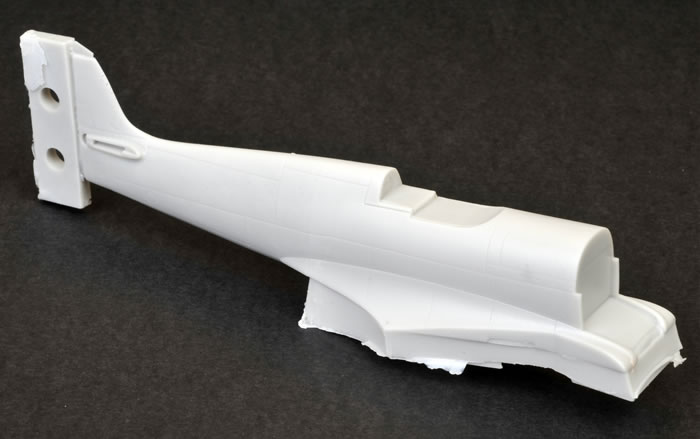
The fuselage from the firewall aft is a single hollow casting with sidewall detail cast on the inside - very impressive.
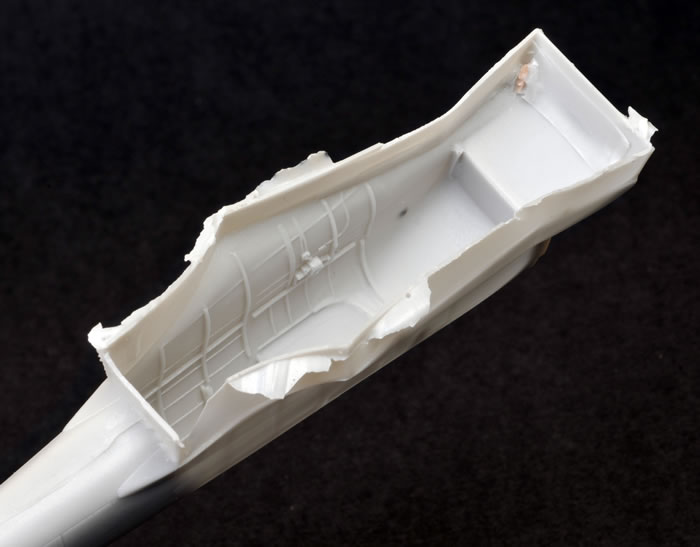
The cockpit is made up from five parts - instrument panel bulkhead, semi-floor, seat, control column and rear frame. Harness straps and a cushion are cast onto the seat.
In the joint interests of complete accuracy and ease of assembly, Alley Cat has supplied three separate noses. The instructions are quite clear as to which nose fits which scheme.

In keeping with the theme of easy construction, the wing is also a full-width single piece. The fuselage simply sits on the wing saddle to complete the main assembly. Flaps are cast up, while ailerons and elevators are cast in neutral positions.
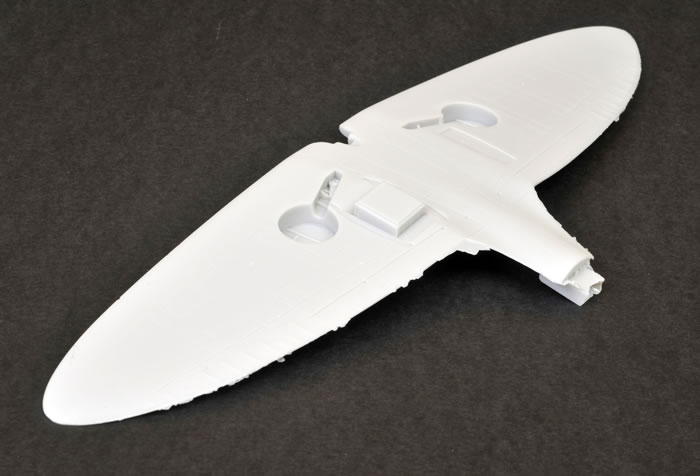
Two windscreen options are provided - one with armoured glass and one without, and all the clear parts are cast in resin. Typical of this medium, the resin looks a little cloudy but a dip in a bath of Future floor polish (or your country's equivalent) will lift them to a high lustre.
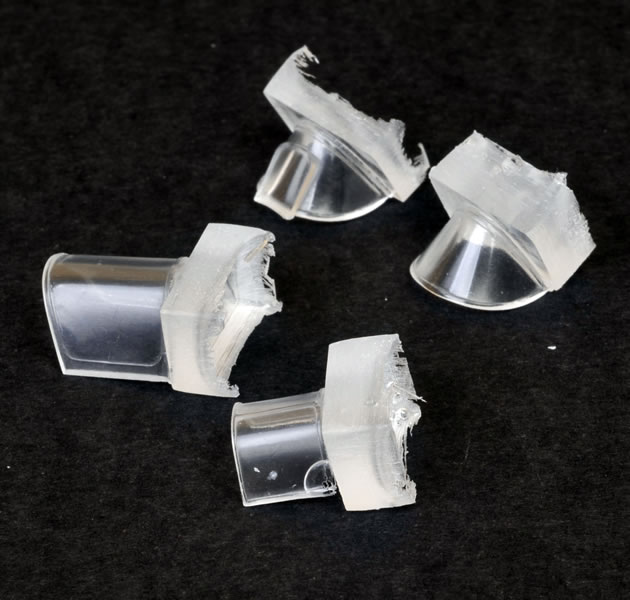
Other options include two styles of rudder (one with the horizontal mass balance and the other diagonal), tail wheel or skid, and three possible configurations for the undercarriage doors.
Decals are thin and crisply printed. Individual numbers for the fuselage and wing serials are separate to ensure correct alignment and minimal carrier film.
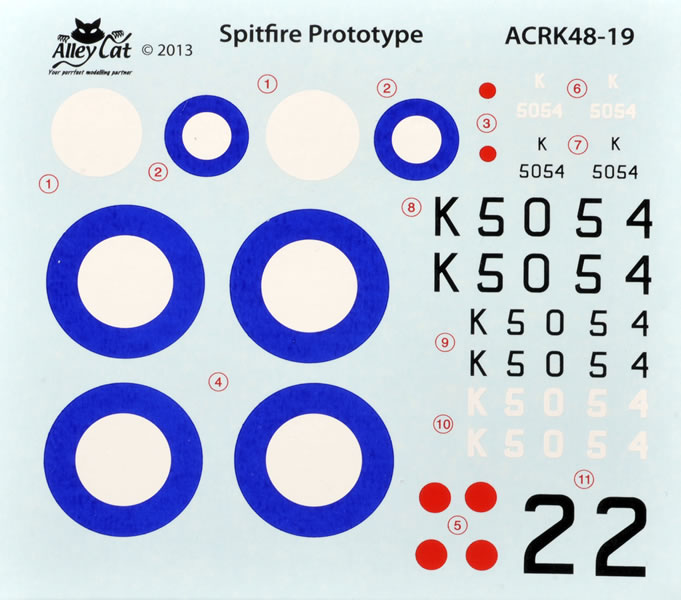
Instructions are provided on three single-sided A4 sheets. The marking guide is printed in colour and offers BS and FS equivalents to the elusive colours where they are available.
If ever a prototype was worthy of a tribute in scale, it would have to be Spitfire K5054.
Alley Cat's new 1:48 scale kit is a fitting homage, and will allow the aircraft to be depicted at various times in its importsnt career.
Detail is very good, surface detail fine and consistent, and it should be easy to build.
This is an excellent resin kit, and it should be suitable for modellers with even only moderate experience.
Highly Recommended.
* Historical background courtesy of Wikipedia
Thanks to A2Zee Models for the sample
Review Text and Images Copyright © 2014 by
Brett Green
Page Created 12 March, 2014
Last updated
12 March, 2014
Back to HyperScale Main Page
Back to Reviews Page |
